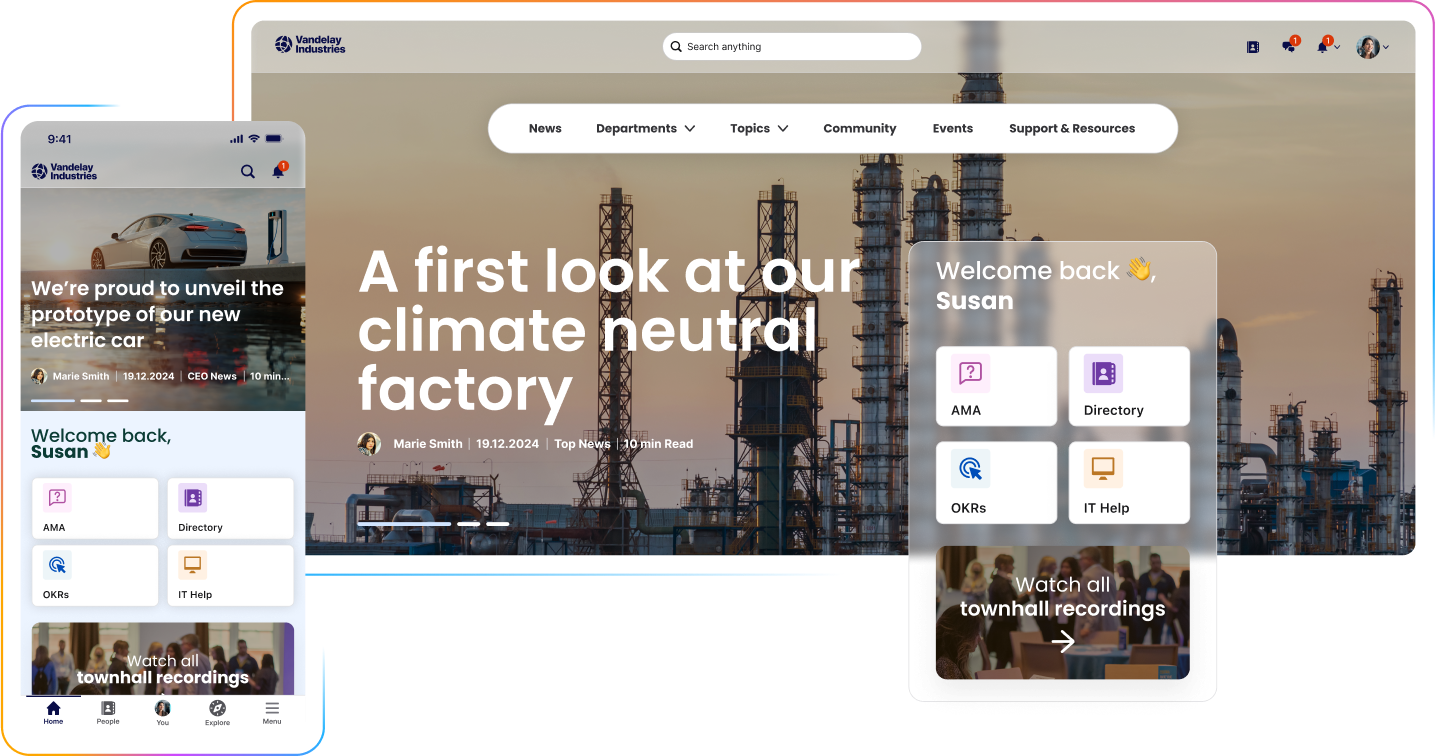Vendor-Managed Maintenance and Hosting
The responsibility for maintenance, updates, and hosting of the intranet lies with the intranet vendor, relieving organizations of these time-consuming operational tasks.
Web-Based Accessibility for Remote Users
Cloud intranets are accessible via a web browser from any internet-connected device, providing flexibility and remote access for users.
Subscription-Based SaaS Model for Cost Efficiency
They follow a Software as a Service (SaaS) model, where organizations pay for both the infrastructure and software on a subscription basis, reducing upfront capital expenses.
Content Management System for Easy Information Handling
Cloud intranets include a content management system that allows organizations to create, organize, and publish content easily, ensuring information is up-to-date and well-structured.
AI and Analytics Integration for Strategic Insights
Cloud intranets incorporate AI and analytics features to provide insights into user behavior, content performance, and trends within the organization.
Mobile-Friendly Design for Seamless Access
Cloud intranets are designed to work seamlessly on mobile devices, ensuring employees can access information and collaborate on smartphones.
Integration Capabilities with Various Software Tools
They support integrations with other software and tools, such as productivity apps, project management tools and HRIS.
Comprehensive Customer Support Services
Intranet vendors provide customer support, including technical assistance, training, and troubleshooting, to help organizations make the most of their intranet platform.





